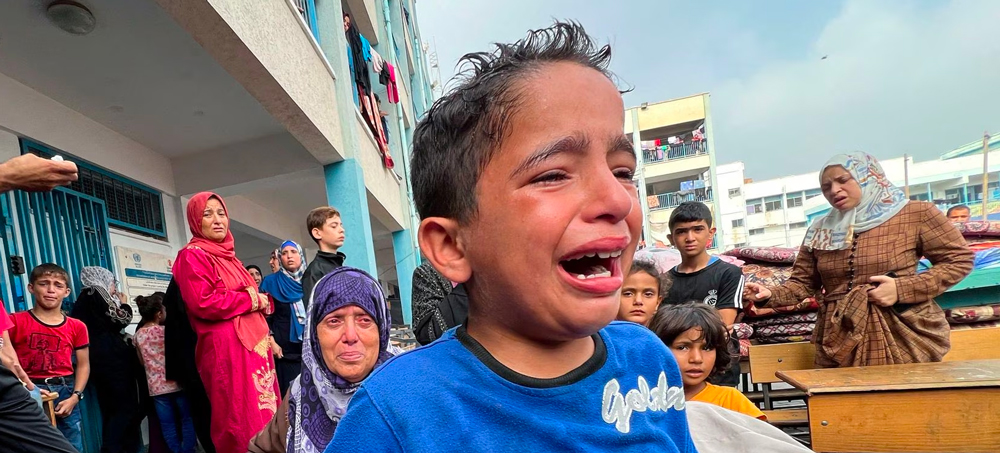A Peace Plan
Marc Ash Reader Supported News November 2, 2023: At a UN shelter in Gaza a young boy reacts to damage from an Israeli airstrike. (Photo: Fade What/Reuters)
November 2, 2023: At a UN shelter in Gaza a young boy reacts to damage from an Israeli airstrike. (Photo: Fade What/Reuters) A Peace Plan
Marc Ash Reader Supported NewsIt is always easier to start a wildfire than it is to put one out. Hamas had a plan. It seemed to envision as its purpose conditions that would in absolute terms ensure a war with Israel. Hamas also appears to have contemplated where the battlefeild for their war would be located. Hamas wanted the war to be fought on their territory, Gaza.
Gaza is Hamas’s home turf, their stronghold, their fortress. It is the place where Hamas fighters would have the best chance of defeating their hated enemy, the Israelis. The sheer scope and brutality of the October 7th attacks guaranteed all-out war with Israel and the taking of hundreds of live hostages men, women and children guaranteed the place, Gaza. Hamas chose Gaza as the battleground for this conflict with a full understanding of what the consequences would be for the Palestinian population.
Gaza is not an island unto itself. In normal times economic aid, goods, services and people flow into and out of the enclave on a fairly regular basis. Weapons and military technology also flow into Gaza. A crucial step in defusing the current crisis is understanding the origins of the economic and military aid.
Negotiating with the heavily armed men in the tunnels hiding behind the hostages they are holding is possible, but it will probably be more efficient and effective to work through their sponsors and mentors. A lot of international financial aid flows to Palestinian organizations and causes, but it’s the direct sources of economic and military aid to Hamas that are the key. That comes down to one central actor, Iran.
Iran has the capacity to significantly influence the conduct of Hamas. Hamas is getting military aid and guidance from Russia, but whether they admit it or not it is Iran that Hamas answers to. Raucous and theatrical protects may garner attention in US congressional hearing rooms but they won’t work in Tehran. The Iranians view their relationship with the US and Israel in fundamentally adversarial terms. They are not likely to cooperate without some catalyzing force.
The US can through conventional carrot and stick negotiations stimulate the intervening cooperation of the Iranians. Hamas and the hostages are in the tunnels, but Iran is, whether they appreciate it or not, is in the drivers seat. Stimulating Iran’s participation in finding solution is the fastest way to bring the crisis in Gaza under control.
The assistance of intermediaries can be helpful, but the fastest way to get the wildfire in Gaza under control is to focus on Tehran.
Marc Ash is the founder and former Executive Director of Truthout, and is now founder and Editor of Reader Supported News.
Reader Supported News is the Publication of Origin for this work. Permission to republish is freely granted with credit and a link back to Reader Supported News.
